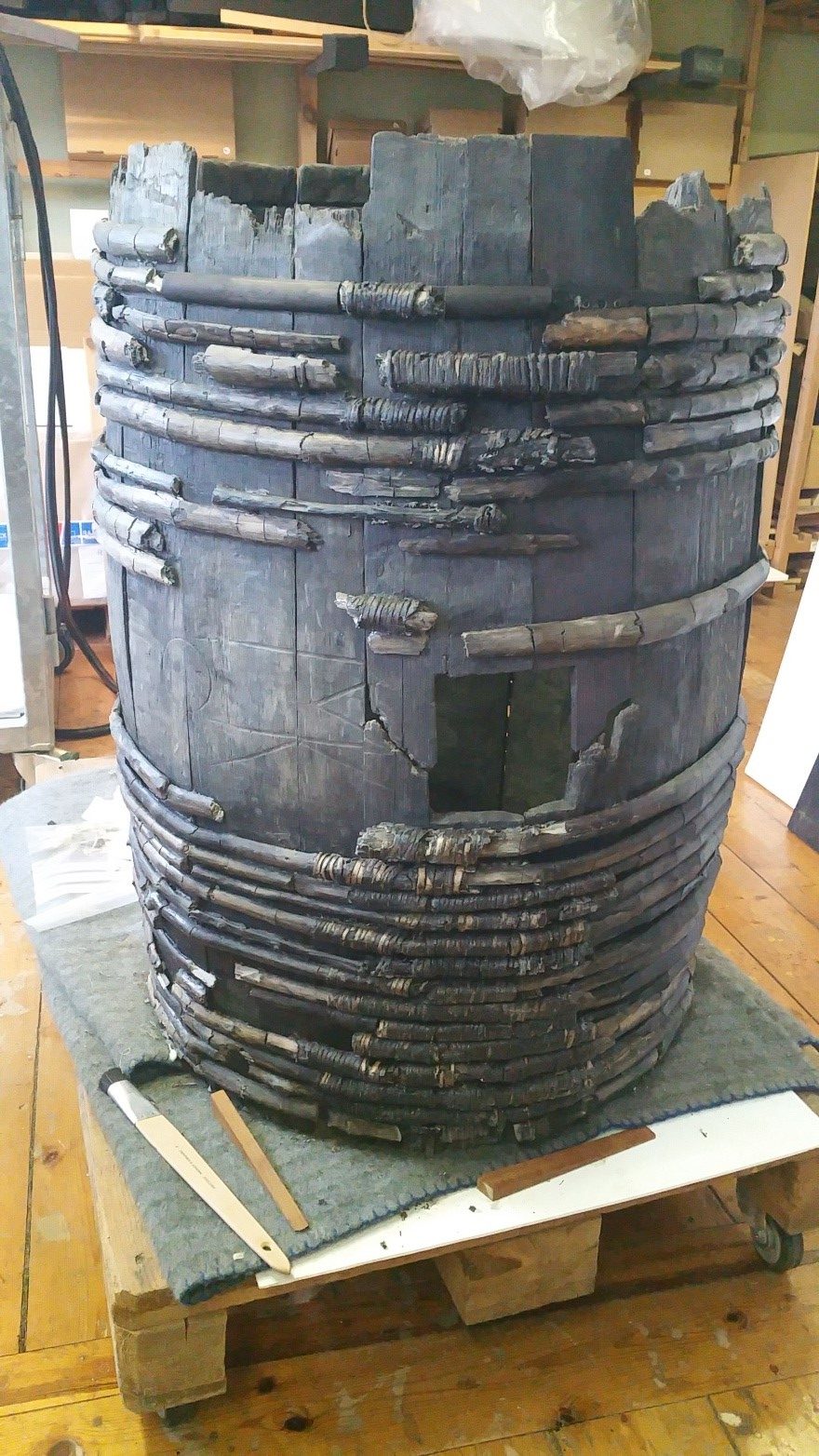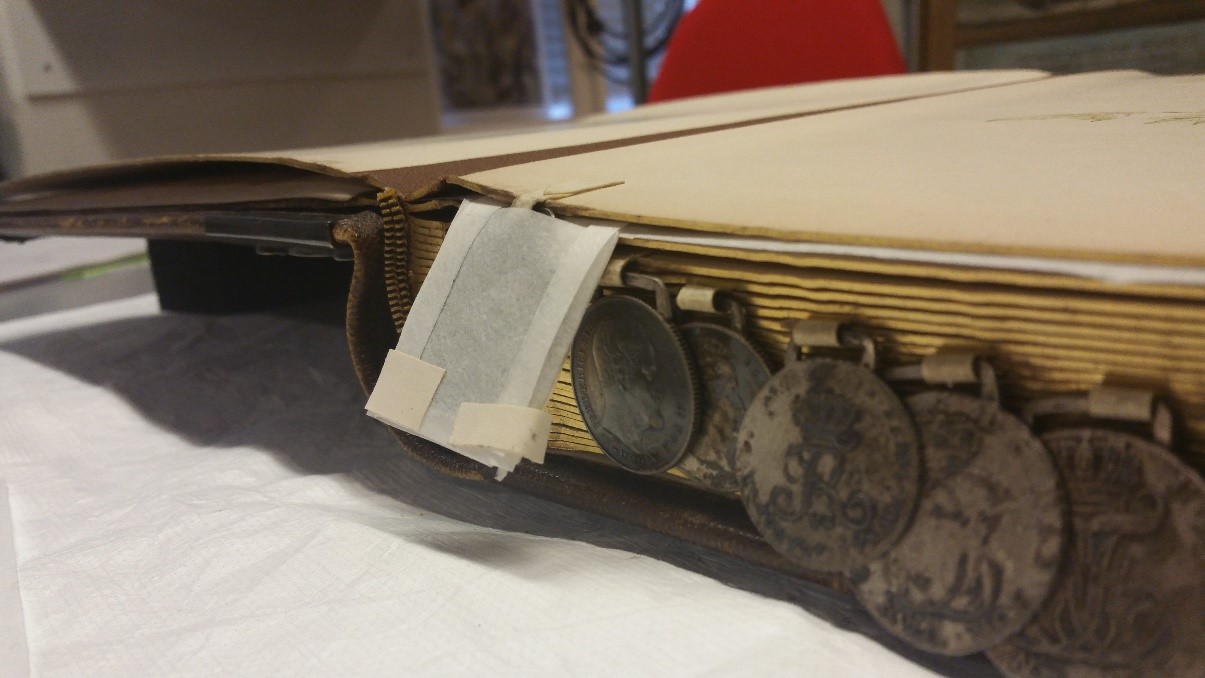From Durham to Denmark – Placement Experience
Here on the island on Langeland we’re not short of interesting and challenging projects to test our skills. Bevaringscenter Fyn handles a range of artefacts both archaeological and historic from a variety of contexts. I myself am working on a similar range of projects and each one requires a distinctly different approach and ethical debate.

to give up their bayonets.
Perhaps my most ‘straightforward’ project is a collection of eleven Napoleonic-era muskets that have suffered from iron corrosion and insect attack. In general the weapons are in a stable condition but require some interventive treatment to protect against subsequent degradation. The removal of iron and copper corrosion products and the protection of the metal surface to at least mitigate the effects of corrosion was deemed appropriate, and prior to beginning this process the weapons were placed under low temperature conditions in a freeze-drier to ensure that any possible insect hatching sites were expunged. One surprisingly difficult stage of the project was removing the bayonets, some of which were corroded into place. Some strategically placed force however solved the problem.

barrel with a few in situ curved
gap fills disguising a metal
construction band on the top row.
Another project I’ve been tasked with is rendering a medieval barrel suitable for display in an upcoming exhibition. The barrel has been conserved with polyethylene glycol after excavation a number of years ago and reconstructed, but after some time in storage it was found to be dusty and soiled with some degree of the PEG weeping from the surface. The task with this project is to improve the visual appearance of the barrel and re-adhere loose or vulnerable fragments of the wooden hoops to ensure they are not lost. Whilst resistant to cleaning solutions, the application of a solvent coupled with some mechanical cleaning methods have greatly improved the overall condition of the object as well as rendering the barrel an attractive exhibition piece.

Thirdly, but by no means finally, a recent project that has left many of us in search of possible preventative solutions is this leather-bound tome of artwork. The object was originally created in time for the silver wedding anniversary of a couple, as outlined by the dates on the front cover, where each acquaintance of the owners have submitted a photograph and a piece of artwork to be bound in the book. Affixed to every other page is a coin showing the lineage of the monarchs of Denmark, a lineage Danes in the 19th century were expected to know by heart. These coins are held in place by a single cardboard loop and five of these loops have since failed. The issues at hand are to find a way to prevent ink-based artworks inside the book from chemically staining and etching the pages whilst the book is closed and to support the coins in some way to lessen the force applied to the cardboard loops during storage and when the pages are turned. This issue requires as much structural engineering as it does conservation, as finding ways to cantilever the coins have proven to be difficult, although as shown below a prototype solution has been assembled.

pocket showing attempts to give
some support to the cardboard hinge.
Outside these three projects there are a wealth of other objects that pass through the lab on a regular basis, ranging from paintings to paper to archaeological wood and iron. There’s never a dull moment and you get to experience the full spectrum of materials and artefacts, as well as trying to pick up on some Danish and exploring a new history and culture at the same time.
Chris.
